1. Introduction
2. General description
3. Features
4. Applications
5. Quick reference data
6. Ordering information
7. Marking
8. Block diagram
9. Pinning information
9.1 Pinning
9.2 Pin description
10. Functional description
10.1 Functional / Power states of PN544
10.1.1 Standby mode
10.1.2 Active R/W mode
10.1.3 Active battery mode
10.1.4 Polling loop
10.1.5 Hard power down (HPD) mode
10.1.6 Monitor mode
10.1.7 Active antenna mode (Powered-by-field)
10.2 Microcontroller HT80C51MX
10.2.1 PN544 memory management
10.2.2 Timer0/1 description
10.2.3 Interrupts management
10.2.4 FW architecture
10.3 Host interfaces
10.3.1 High Speed UART (HSU) Interface
10.3.1.1 HSU configuration options
10.3.2 I2C interface
10.3.2.1 I2C configuration options
10.3.2.2 I2C functional description
10.3.3 Serial Peripheral Interface
10.3.3.1 Features
10.3.3.2 SPI configuration options
10.3.3.3 SPI functional description
10.3.4 IOs configuration
10.3.4.1 Pad configuration description
10.4 Secure element interfaces
10.4.1 SWP interface
10.4.2 NFC-WI interface support
10.5 PN544 clock concept
10.5.1 27.12 MHz crystal oscillator
10.5.2 Integrated FracNpll to make use of cellular clock
10.5.3 Low power 20 MHz oscillator
10.5.4 Low power 333 kHz oscillator
10.6 Supply concept
10.6.1 PN544 supply sources
10.6.2 PMU functional description
10.6.3 Secure element supply
10.6.4 UICC supply
10.6.5 Battery voltage monitor
10.7 Contactless interface Unit
10.7.1 Reader/Writer modes
10.7.1.1 ISO/IEC 14443-A/MIFARE PCD mode
10.7.1.2 FeliCa PCD mode
10.7.1.3 ISO/IEC 14443B PCD mode
10.7.1.4 ISO/IEC 15693 VCD mode
10.7.2 ISO/IEC 18092, ECMA 340 NFCIP-1 operating mode
10.7.2.1 ACTIVE Communication mode
10.7.2.2 PASSIVE Communication mode
10.7.2.3 NFCIP-1 framing and coding
10.7.2.4 NFCIP-1 protocol support
10.7.3 Card Operation mode
10.7.3.1 ISO/IEC 14443-A / MIFARE Card Operation mode
10.7.3.2 ISO/IEC 14443 B and B’ Card Operation mode
11. Application design-in information
12. Limiting values
13. Recommended operating conditions
14. Thermal characteristics
15. Characteristics
15.1 Current consumption characteristics
15.2 Functional block electrical characteristics
15.2.1 Battery voltage monitor characteristics
15.3 Pin characteristics
15.3.1 XTAL pin characteristics (XTAL1, XAL2)
15.3.2 VEN and VEN_MON input pin characteristics
15.3.3 NRESET input pin characteristics
15.3.4 Output pin characteristics for IRQ
15.3.5 Pin characteristics for GPIOs, IF0 and IF1
15.3.6 Pin characteristics for IF2, IF3
15.3.7 SWIO pin characteristics
15.3.8 Output pin characteristics for EXT_SW_CTRL
15.3.9 Input pin characteristics for SIGIN
15.3.10 Output pin characteristics for SIGOUT
15.3.11 Output pin characteristics for AUX1/AUX2/AUX3/AUX4
15.3.12 Input pin characteristics for RX
15.3.13 Output pin characteristics for TX1/TX2
16. Package outline
17. Abbreviations
18. References
19. Revision history
20. Legal information
20.1 Data sheet status
20.2 Definitions
20.3 Disclaimers
20.4 Licenses
20.5 Trademarks
21. Contact information
22. Tables
23. Figures
24. Contents
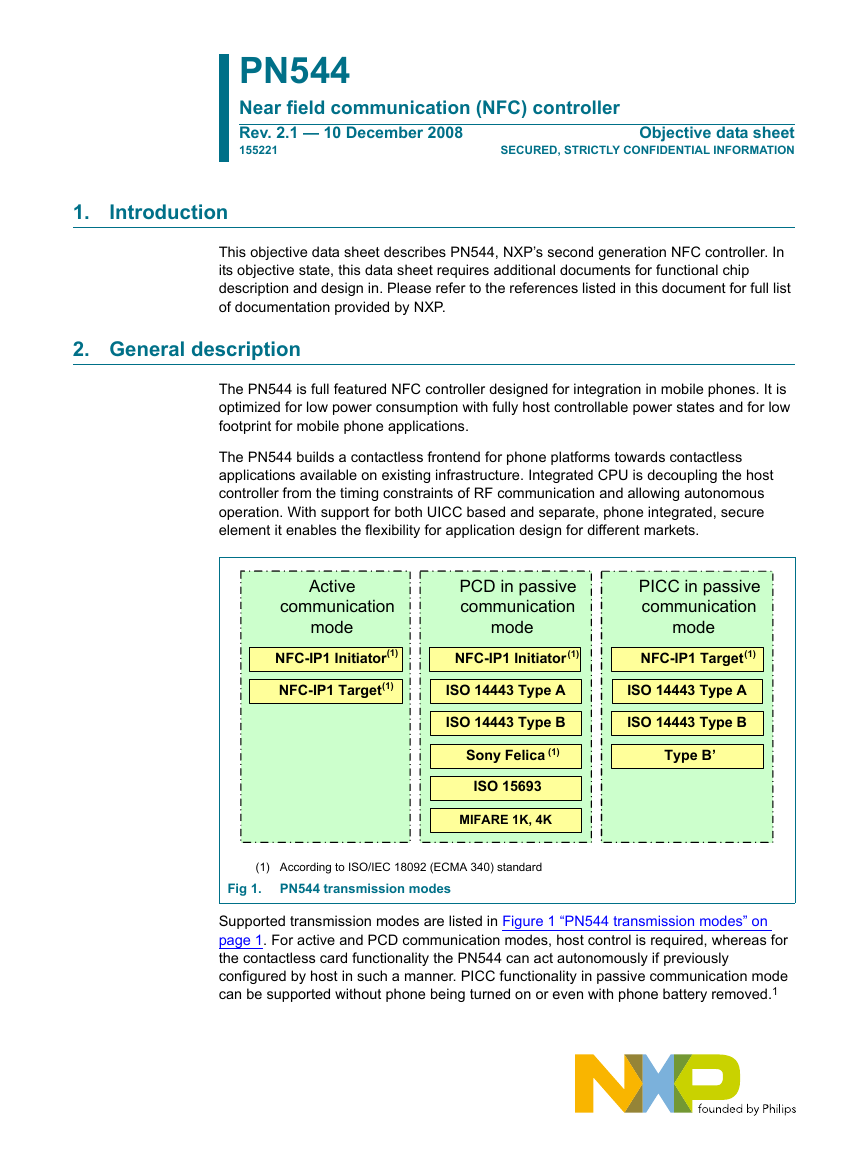

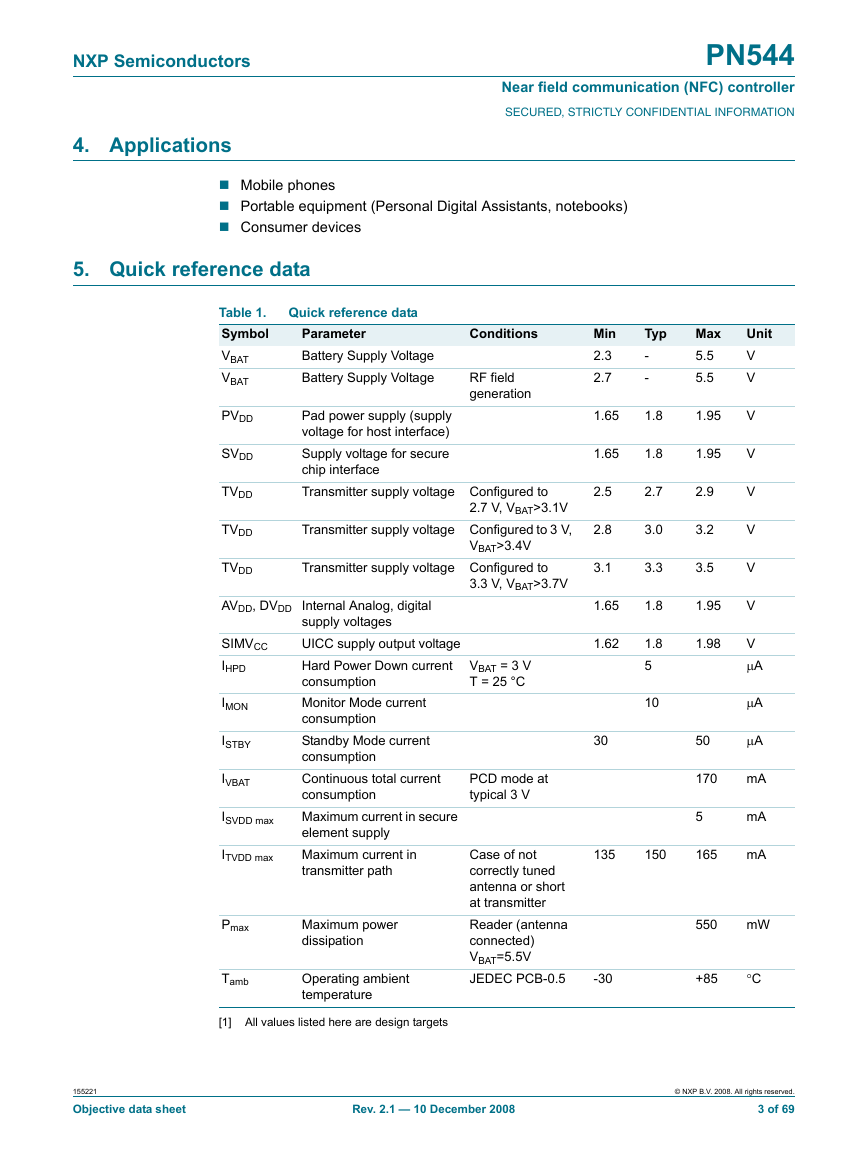


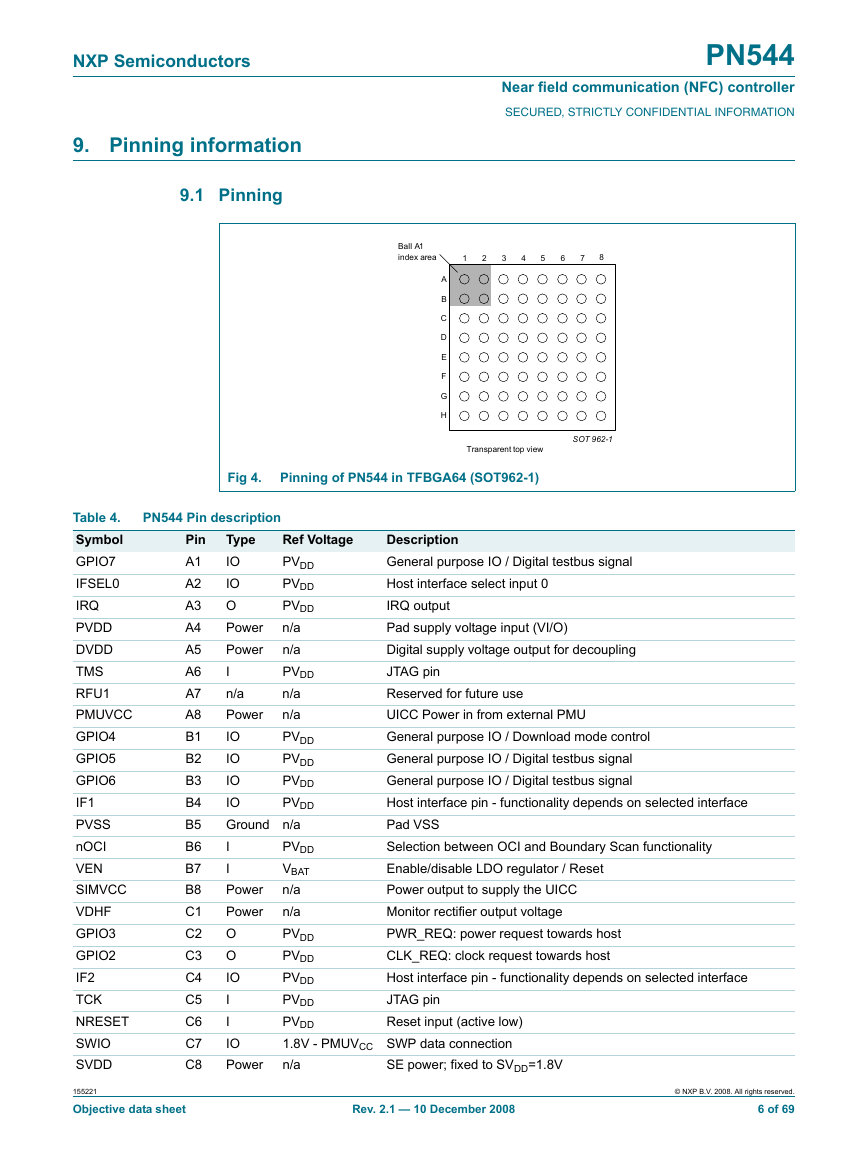
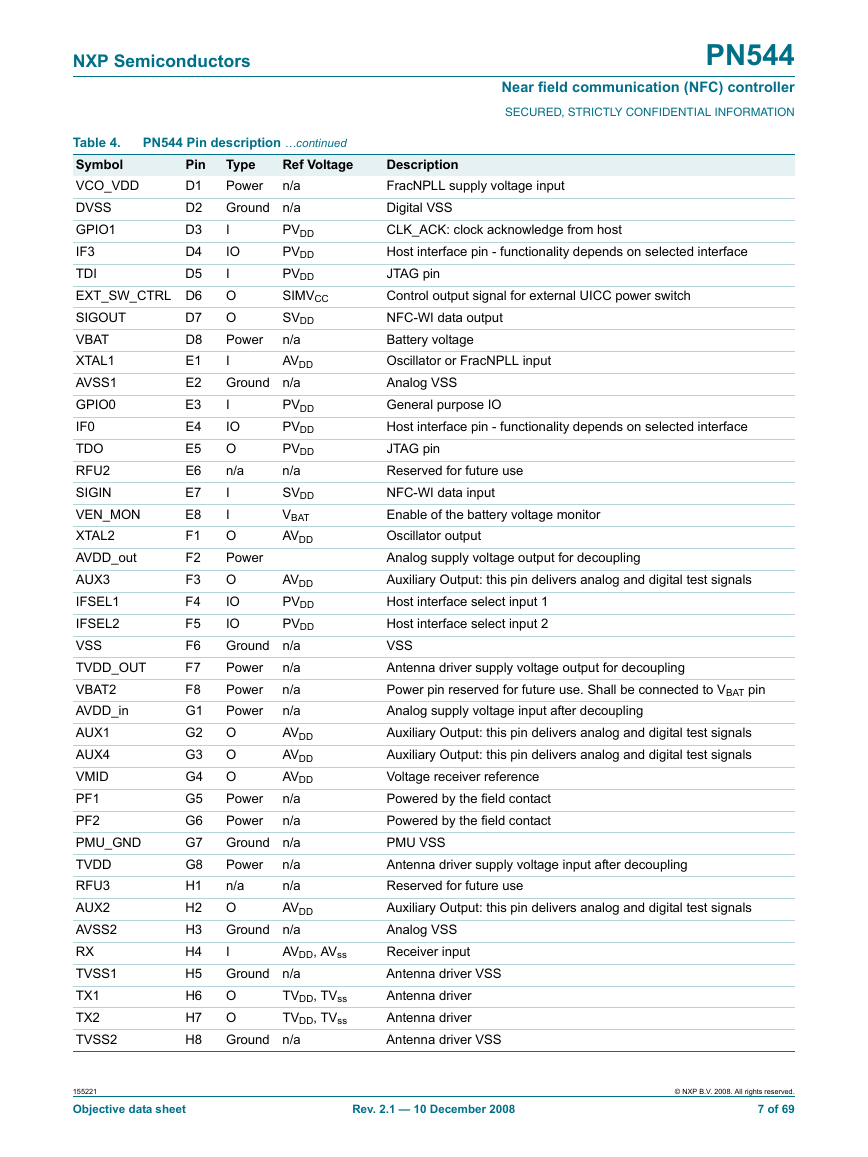
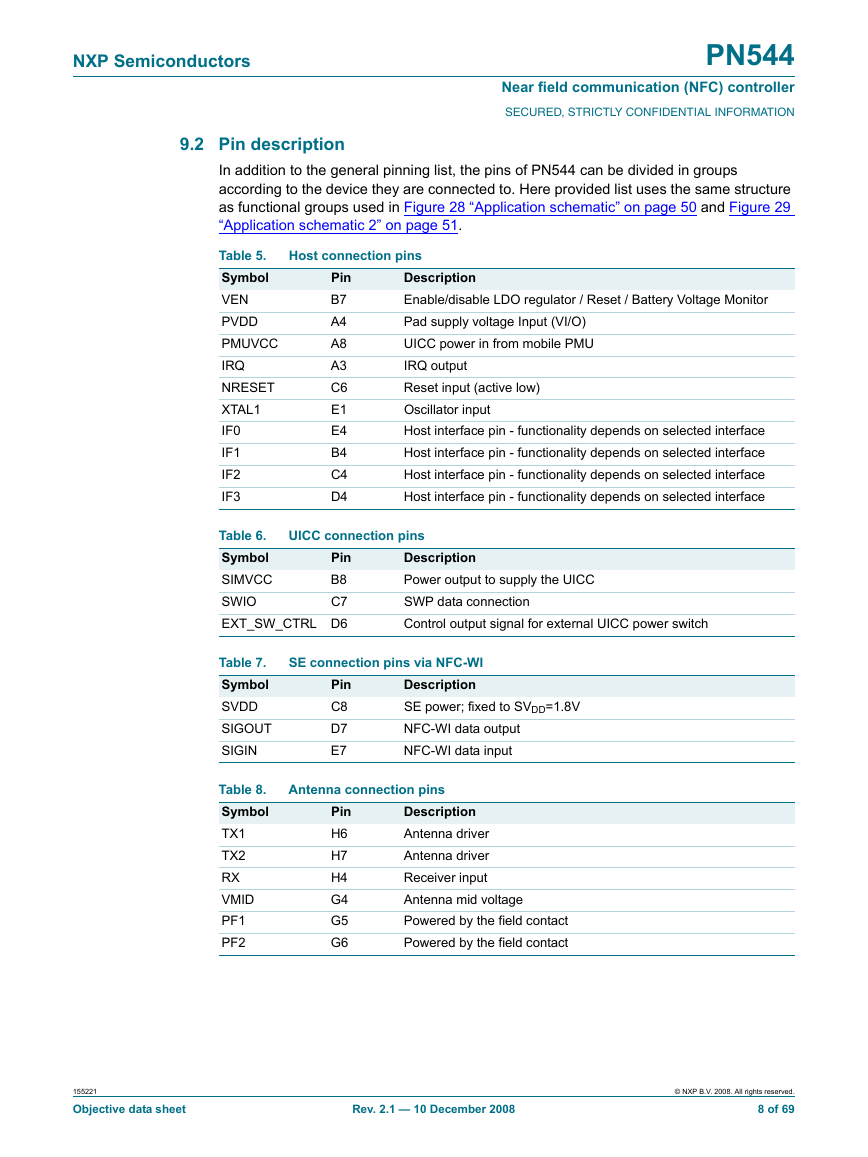








 2023年江西萍乡中考道德与法治真题及答案.doc
2023年江西萍乡中考道德与法治真题及答案.doc 2012年重庆南川中考生物真题及答案.doc
2012年重庆南川中考生物真题及答案.doc 2013年江西师范大学地理学综合及文艺理论基础考研真题.doc
2013年江西师范大学地理学综合及文艺理论基础考研真题.doc 2020年四川甘孜小升初语文真题及答案I卷.doc
2020年四川甘孜小升初语文真题及答案I卷.doc 2020年注册岩土工程师专业基础考试真题及答案.doc
2020年注册岩土工程师专业基础考试真题及答案.doc 2023-2024学年福建省厦门市九年级上学期数学月考试题及答案.doc
2023-2024学年福建省厦门市九年级上学期数学月考试题及答案.doc 2021-2022学年辽宁省沈阳市大东区九年级上学期语文期末试题及答案.doc
2021-2022学年辽宁省沈阳市大东区九年级上学期语文期末试题及答案.doc 2022-2023学年北京东城区初三第一学期物理期末试卷及答案.doc
2022-2023学年北京东城区初三第一学期物理期末试卷及答案.doc 2018上半年江西教师资格初中地理学科知识与教学能力真题及答案.doc
2018上半年江西教师资格初中地理学科知识与教学能力真题及答案.doc 2012年河北国家公务员申论考试真题及答案-省级.doc
2012年河北国家公务员申论考试真题及答案-省级.doc 2020-2021学年江苏省扬州市江都区邵樊片九年级上学期数学第一次质量检测试题及答案.doc
2020-2021学年江苏省扬州市江都区邵樊片九年级上学期数学第一次质量检测试题及答案.doc 2022下半年黑龙江教师资格证中学综合素质真题及答案.doc
2022下半年黑龙江教师资格证中学综合素质真题及答案.doc